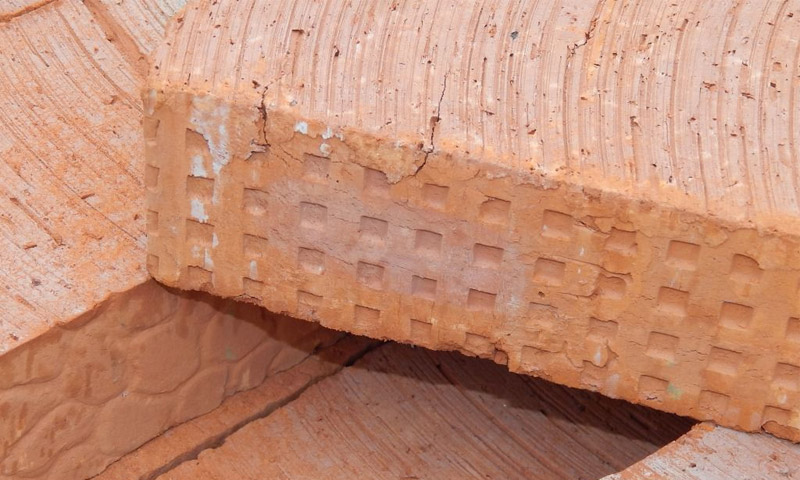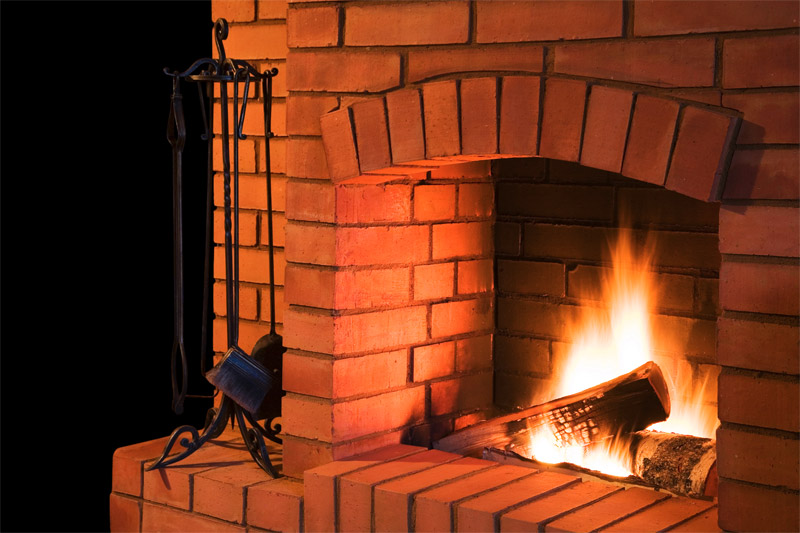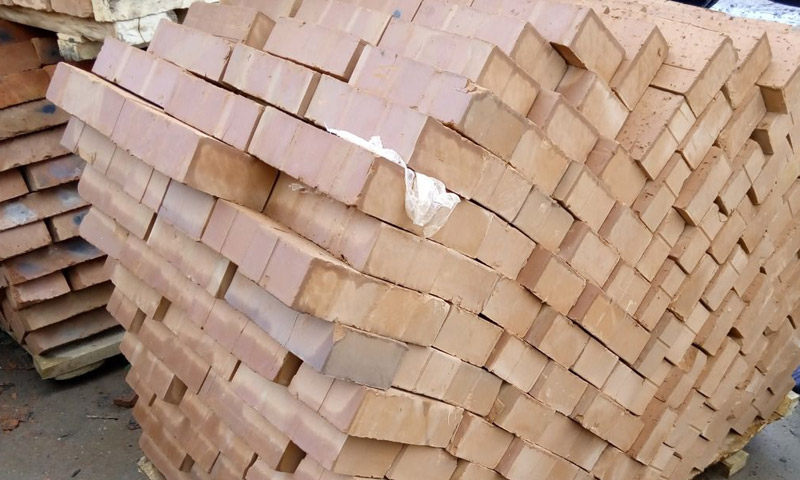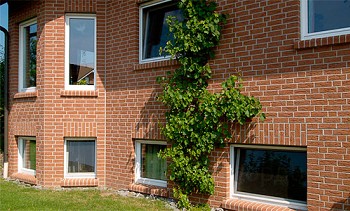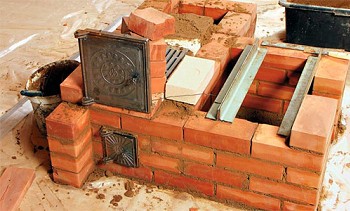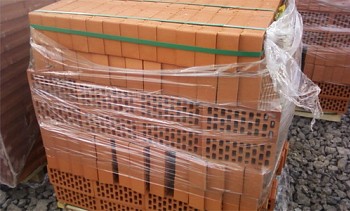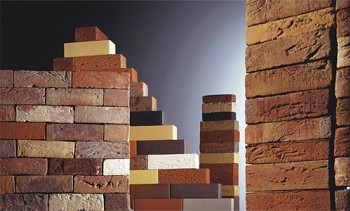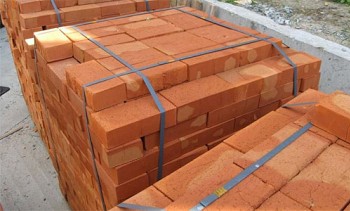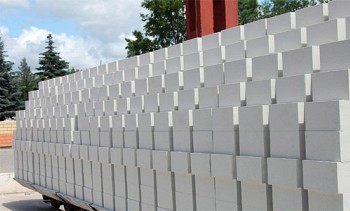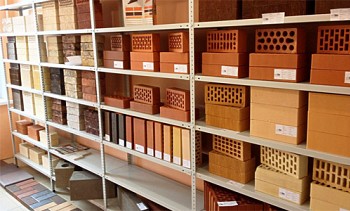The traditional method of heating low-rise residential buildings involves the availability of special capital structures of various types. The material for them is the kiln brick characteristics, which provide the necessary resistance to high temperature influences. It is used to create shells capable of isolating open fire and protecting building structures from destruction.
Heat-resistant brick is intended for facing the internal surfaces of stoves for domestic and industrial use, as well as fireplaces, chimney channels and pipes. This building material is used for the construction of outdoor stationary barbecue facilities and barbecue facilities. Fireclay, among other things, can be used for lining the combustion chambers of solid fuel boilers and heating boilers.
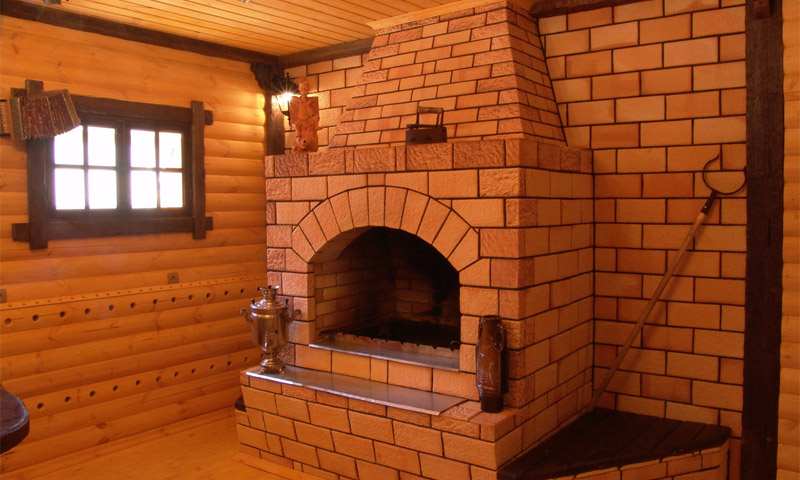
Content:
- Composition, production and varieties of kiln bricks
- Density and fullness of kiln bricks
- Strength
- Temperature limit
- Thermal conductivity of refractory bricks
- Resistance to aggressive environments
- Water absorption
- Frost resistance of refractory bricks
- Dimensions and accuracy of geometric shapes
- Ceramic Brick Manufacturers
Composition, production and varieties of kiln bricks
Based on the conditions arising from the combustion of solid fuels, stove brick must meet three basic requirements:
- Heat resistance not less than 1000 ° C without loss of strength during prolonged exposure.
- Low thermal conductivity protects the surrounding building structures.
- Heat resistance The product must withstand a significant number of heating and cooling cycles.
Refractory stove brick is an excellent energy accumulator, in other words, it heats up quickly enough and gradually gives off heat to the environment.
Refractory bricks are made in specialized factories according to the technologies provided by GOST 390-96. The composition of the raw materials used for the production of kiln bricks as the main component includes refractory clay of special grades up to 70%. Introduction to the molding mass of some types of mixture allows you to get blocks with different properties, additives can serve:
- graphite;
- powder coke;
- large fractions of silica powder.
The technology for the production of fire-resistant bricks by the method of semi-dry pressing involves a number of operations in the following sequence:
1. Preparation of raw materials: grinding and kneading clay, the introduction of the mixture, mixing until a homogeneous composition. During this process, up to 8 -10% of water is added to the composition to achieve the required humidity.
2. The finished mass is loaded into the hopper, from which it enters the metering carriage moving back and forth.
3. The molded brick is fed to the lower punch of the mold, which is lowered together with the workpiece.
4. The upper part of the press is lowered and exerts sufficient pressure on the brick to compact it.
5. At the end of the process, the lower punch pushes the block out of the mold onto the platform. At this moment, the carriage begins to move from under the hopper with the next portion of the raw material moves the workpiece onto the conveyor belt.
6. The pressing process is repeated, and the raw brick is sent as the batch is formed to be fired in a tunnel type furnace at a temperature of about 1000 ° C.
This technology allows to exclude the operation of preliminary drying of the product and reduce the time of its production. This method of producing fire-resistant bricks is much cheaper than the method of plastic molding, when a continuous beam is made from the prepared mass with a moisture content of 17-30%.Procurement by a special machine is cut into individual blocks, which are fed to the preliminary drying followed by firing.
An extensive range of fire-resistant brick ovens of the following types is presented on the building materials market:

Half acid refractory brick
 Dinas Refractory Brick
Dinas Refractory Brick

Mullite Refractory Brick
 Corundum Refractory Brick
Corundum Refractory Brick
| Type of refractory brick | Brands of refractory bricks |
|---|---|
| Fireclay | SHAK; SHA-I; SB-I; ШВ-I (II); SHUS. |
| Half sour | PB-I; PB –II; PV-I; PV-II. |
| Dinasovy | DN |
| Chamotte and semi-acid lightweight | SLA-1,3; ShKL-1.3; SHL-1.3; SHL-1,0; SHL-0.9; SHTL-0.6; HL 1-6.4; SHL-0.4. |
| Mullite-siliceous lightweight | MKRL-0.8 and MKRL-0.7 |
| Mullite Lightweight | MLL-1,3 |
| Lightweight corundum | KL-1,1 |
| Dinas lightweight | DP1-1,2 |
| Mullite Corundum | ISS-72 |
| Mullite | MLS-62 |
Technical characteristics of furnace refractory bricks depend on the type and brand, for convenience they are summarized in the table:
| Index | The normal value for this brand of brick | ||||||
|---|---|---|---|---|---|---|---|
| SHAK | SHA | SB | BW | SHUS | PB | PV | |
| Refractoriness, ° C | 1730 | 1690 | 1650 | 1630 | 1580 | 1670 | 1580 |
| The porosity of the products,% | 23 | 24 | 24 | - | 30 | 24 | - |
| Tensile strength, N / mm2 | 23 | 20 | - | 22 | 12 | 20 | 15 |
| Supplement Content | |||||||
| Al2 O2 | 33 | 30 | 28 | 28 | 28 | - | - |
| Al2 O3 | - | - | - | - | - | 14 - 28 | 14 - 28 |
| SiO2 | - | - | - | - | - | 65 - 85 | 65 - 85 |
Density and fullness of kiln bricks
The physico-chemical characteristics of refractory products are largely determined by the composition of the raw materials and the production method. For the construction of fireplaces, stoves for domestic or industrial use and other similar structures, solid brick is used. Density is one of the most important parameters of such products, controlled at manufacturing plants.
The check is carried out in accordance with the methodology established by the requirements of GOST 24468-80. During the measurement process, the apparent density and total porosity of the brick are determined. The optimal ratio between these parameters allows to achieve maximum strength and resistance of the product to environmental conditions. Density limits for different types of refractory bricks are defined in GOST 53406-2009.
Strength
The inside of stoves and fireplaces is exposed to high temperatures and open flames. Fire-resistant stove brick has the ability to effectively resist these factors. The tensile strength of each product depends on its brand, exact adherence to the recipe and production technology. Quantitative indicators for different types of refractory blocks are indicated in the table above.
The maximum tensile strength has fireclay bricks of the ShAK brand, which is 23 N / mm 2. Such products are widely used for masonry household and technological stoves in industrial enterprises, as well as operating fireplaces in houses. When choosing a specific brand of brick, the ultimate strength parameter is crucial.
Temperature limit
The furnaces of domestic stoves and fireplaces are in direct contact with open fire, and chimney channels and pipes with combustion products heated to high temperatures. The materials used for the construction of these structures must have a high temperature limit. State standards determine its importance for different brands of general-purpose refractory blocks.
Various fireclay bricks of different types have maximum heat resistance, the temperature limit for them is in a wide range from 1630 ° C to 1730 ° C. The requirements for the materials of other components of stoves or fireplaces are less stringent. So, the material for the chimneys must withstand temperatures of the order of + 700 ° C.
Thermal conductivity of refractory bricks
Fire-resistant kiln brick used for laying fire chambers and chimney channels is designed to protect adjacent building structures from high temperature influences. To achieve this goal, the product must have a low thermal conductivity. Refractory bricks of different types have the following indicators for this parameter:
- fireclay brick - 1, 8 - 1.9 W / (m * ° C);
- Dinas - 1.9 -1.95 W / (m * ° C);
- magnesite - 2.6 - 2.8 W / (m * ° C);
- chromomagnesite - 2.75 - 2.85 W / (m * ° C).
From the above list it can be seen that chamotte brick has the lowest thermal conductivity, which has received the maximum distribution in construction. Such bricks reliably protect the building structure from exposure to high temperatures and are able to accumulate heat.
Resistance to aggressive environments
Refractory bricks, the characteristics of which are at a fairly high level, in the operation of furnaces in contact with fire and combustion products. The effects of acids or alkalis or other aggressive media on products in such structures are practically excluded. Accordingly, special requirements for this indicator are not presented to them.
Due to its composition, refractory fireclay bricks should not be used in structures where contact with an acidic environment is possible. This can lead to its premature destruction. Other types of refractory bricks also have their own characteristics that must be considered when choosing materials for the construction of stoves or fireplaces.
Water absorption
Fire-resistant brick is made of clay and pores are formed in its structure during its firing. The presence of voids in the structure of the product contributes to a significant absorption of moisture from the atmosphere or in direct contact with water. Depending on the type of product, blocks are able to accumulate from 15 to 30% of the liquid of its total volume. This is a high figure for building material.
This property of fire-resistant bricks should be considered in the process of warehousing and storage of bricks. It is not allowed to find products in open areas for a long time, especially in rain or snow. This can lead to significant absorption of water and adversely affect its strength and other characteristics.
Frost resistance of refractory bricks
The scope of refractory bricks is the construction of stoves and fireplaces in residential buildings and industrial buildings. These products do not differ in increased frost resistance due to their structure and materials used. According to the current standard, this product property is evaluated as the ability to withstand a certain number of freezing and thawing cycles in a state of maximum moisture saturation.
For fireclay bricks of the ShAK, ShA, ShV and ShB brand this indicator does not exceed 15 cycles. Refractory bricks should not be used for the construction of basement structures and the outer cladding of buildings and structures. During the operation of buildings with stove heating or fireplaces, it is recommended to maintain positive temperatures. Frequent cooling of such structures to extreme temperatures can lead to their destruction.
Dimensions and accuracy of geometric shapes
Generally refractory products have rather stringent requirements in many respects. In particular, the size and accuracy of the forms are strictly regulated by the current GOST 8691-73, which meets the international standards of the ISO 5019 series from 84 years. For refractory bricks of different grades, 11 sizes are provided, with a certain ratio of length, thickness and height.
| Product Numbers | |||||||||||
|---|---|---|---|---|---|---|---|---|---|---|---|
| 1 | 2 | 3 | 4 | 5 | 6 | 6 a | 7 | 8 | 9 | 10 | |
| Length | 230 | 230 | 230 | 230 | 230 | 230 | 230 | 250 | 250 | 300 | 345 |
| Thickness | 65 | 65 | 114 | 114 | 114 | 114 | 150 | 124 | 124 | 150 | 150 |
| Height | 65 | 65 | 100 | 75 | 65 | 40 | 65 | 75 | 65 | 65 | 75 |
The maximum deviations from the dimensions of the refractory bricks of different types (slab, tile or straight) have the following meanings:
- the length of the manufacturing error of the product should not exceed 5 mm;
- width - 3 mm;
- by thickness - 1 - 2 mm.
Control of finished products by parameters such as manufacturing accuracy and form conformity is carried out by special technical departments of the enterprise. Product checks are carried out selectively for batches of a certain amount of brick using random sampling.
Ceramic Brick Manufacturers
An increase in the volume of construction in our country in recent years has had a positive effect on companies producing the relevant materials.Fireclay bricks whose technical specifications meet the requirements of standards and at affordable prices are produced by the following companies:
- TEREX Group of Companies;
- Bogorodsky factory of ceramic wall materials;
- Verkhnevolzhsky brick factory;
- Wienergerger Brick;
- Kerma;
- "Ceramics" (Lomintsevsky brick factory);
- "Nerekht plant of ceramic materials";
- Brick factory BRAER.
The named enterprises produce fire-resistant bricks in a wide assortment and of appropriate quality. The products of these factories are in demand among builders and the population of both the regions where they are located and in neighboring areas. Competition between manufacturers of building materials has a positive effect on quality and assortment.


